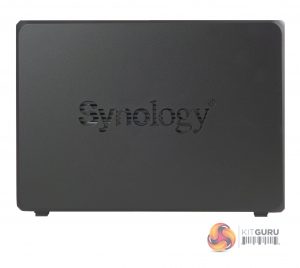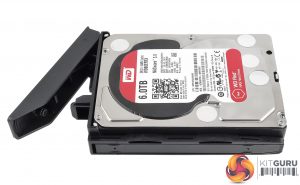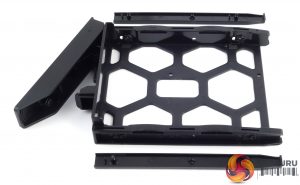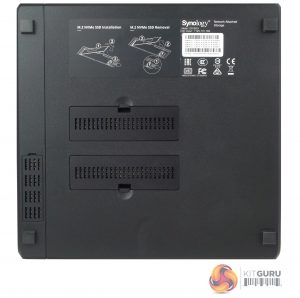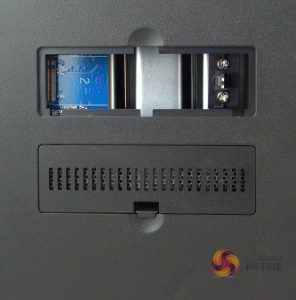
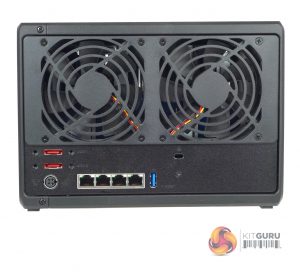
With its five vertically mounted drive bays Synology's DiskStation DS1520+ is a compact tower design. To the right of the drive bays sit the six vertically mounted indicator LEDs; the top one is for system status with the remaining five indicators for drive activity. Under these and towards the base of the unit sit a vertically mounted USB 3.0 port and the power button.
Dominating the rear panel are the grills for the pair of 92mm system cooling fans. Under the left-hand grill sit the four Gigabit Ethernet ports, a pair of eSATA ports, a vertically mounted USB 3.0 port, the power in port and a reset button. Under the right hand, fan sits a Kensington lock slot.
Now adding eSATA ports might seem to be old school when you have very high-speed USB ports in the market place but in this case, it’s what brings extra capacity support to the DS1520+ as the NAS supports Synology’s DX517 Expansion Unit, in fact, two of them.
The DX517 is a 5-bay expansion unit which currently (at the time of writing) supports up to 16TB drives which means by plugging a pair of DX517 units into the DS1520+, the storage capacity of the NAS increases by 160TB.
The side panels of the DS1520+ have Synology branding cut into them with a mesh backing to provide extra ventilation for the NAS.
The plastic drive trays are tool-free for 3.5in drives but 2.5in drives will need fixing to the bays (enough screws are provided in the box). The larger drives are held in position by plastic strips which have pins on them to go through the holes in the sides of the trays and into the mounting holes of the drive, a simple but very effective tool-free design. The drive bay doors have physical security in the shape of simple locks (Synology bundle a pair of keys with the NAS).
To give the DS1520+ more performance when it comes to caching duties, Synology has built in a pair of NVMe supporting M.2 slots which sit behind hatches in the base of the NAS.
 KitGuru KitGuru.net – Tech News | Hardware News | Hardware Reviews | IOS | Mobile | Gaming | Graphics Cards
KitGuru KitGuru.net – Tech News | Hardware News | Hardware Reviews | IOS | Mobile | Gaming | Graphics Cards


